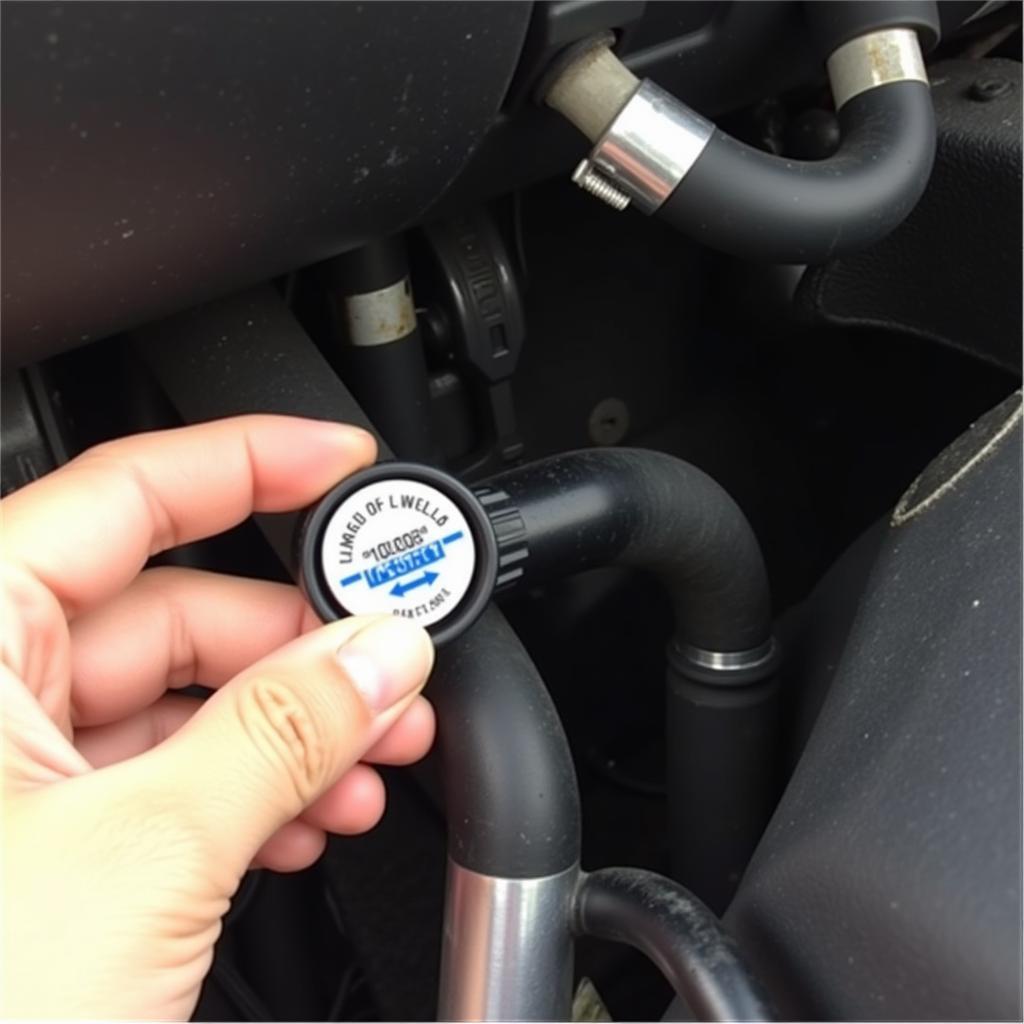The dreaded “Parking Brake Release” warning on your 2013 Lexus dashboard can be a frustrating experience. This issue, although common, can stem from various reasons, ranging from simple glitches to more complex mechanical failures. This comprehensive guide will walk you through the potential causes, troubleshooting steps, and solutions to get your Lexus back on the road safely.
Understanding the Warning System
Before diving into the specifics of the “Parking Brake Release” warning, it’s crucial to understand how your Lexus’s warning system works. Your vehicle is equipped with sensors that constantly monitor various systems, including the parking brake. When a sensor detects an anomaly, it triggers a warning message on your dashboard. This could be a visual alert, an audible chime, or both.
Common Causes of the “Parking Brake Release” Warning in Lexus 2013 Models
Here are some of the most common reasons you might be seeing the “Parking Brake Release” warning on your 2013 Lexus:
- Parking Brake Not Fully Released: The most obvious and easily resolvable cause is that the parking brake is not fully disengaged. This often happens unintentionally, especially if you’re not used to the specific feel of your Lexus’s parking brake lever or pedal.
- Faulty Brake Switch: Your Lexus uses a switch to detect whether the parking brake is engaged or released. Over time, this switch can wear out, become misaligned, or fail, leading to a false warning.
- Low Brake Fluid: Low brake fluid level can trigger various warning lights, including the parking brake warning. This is a serious issue that requires immediate attention.
- Worn Parking Brake Cables: The parking brake system relies on cables to engage and disengage the brakes. If these cables are frayed, stretched, or corroded, they can prevent the parking brake from fully releasing.
- Problem with the Electronic Control Unit (ECU): In some cases, a malfunctioning ECU, which controls various systems in your car, could be sending a false “Parking Brake Release” warning.
Troubleshooting the “Parking Brake Release” Warning
Now that you have an idea of the potential culprits, let’s look at how to troubleshoot the issue:
- Check the Obvious: Start with the simplest solution: ensure your parking brake is fully disengaged. If it’s a foot-operated parking brake, make sure it’s not stuck or obstructed.
- Inspect Brake Fluid Level: Locate the brake fluid reservoir under the hood and check the fluid level. If it’s below the minimum mark, add the recommended brake fluid type for your Lexus model.
- Visually Inspect Parking Brake Cables: While visually inspecting the cables might not always reveal the issue, look for any obvious signs of damage, fraying, or corrosion.
 Checking brake fluid level
Checking brake fluid level
When to Seek Professional Help
If the basic checks and troubleshooting haven’t resolved the issue, it’s time to seek professional help:
“Ignoring persistent warning lights can lead to more severe problems down the line. It’s always best to err on the side of caution and have your vehicle inspected by a qualified technician,” says John Smith, Senior Automotive Technician at ABC Auto Services.
A trained mechanic can accurately diagnose the problem using specialized diagnostic tools and address the root cause effectively. This might involve:
- Testing the Parking Brake Switch: A mechanic can test the parking brake switch for continuity and functionality to determine if it needs replacement.
- Inspecting and Adjusting Parking Brake Cables: Professional inspection and adjustment ensure the cables are within the correct tension specifications.
- Diagnosing and Repairing/Replacing the ECU: If the ECU is faulty, it might require specialized repair or replacement, which is best handled by a professional.
Conclusion
The “Parking Brake Release” warning on your 2013 Lexus should not be ignored. By understanding the potential causes and following the troubleshooting tips outlined in this guide, you can often identify and resolve simple issues. However, for more complex problems, seeking professional assistance is crucial to ensure the safe and efficient operation of your vehicle.

